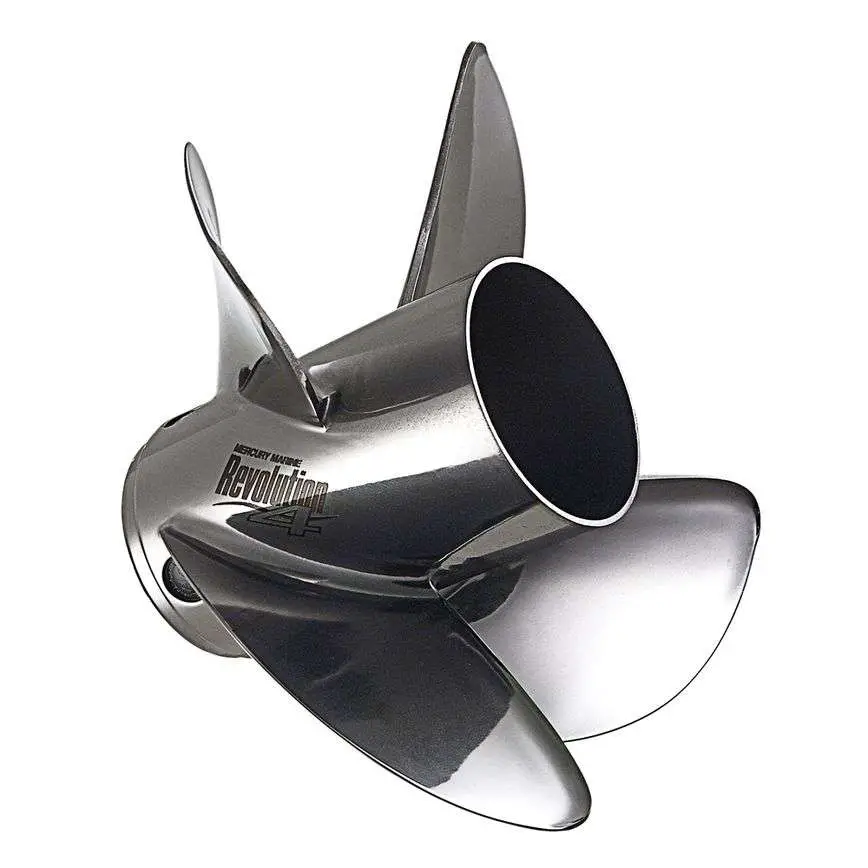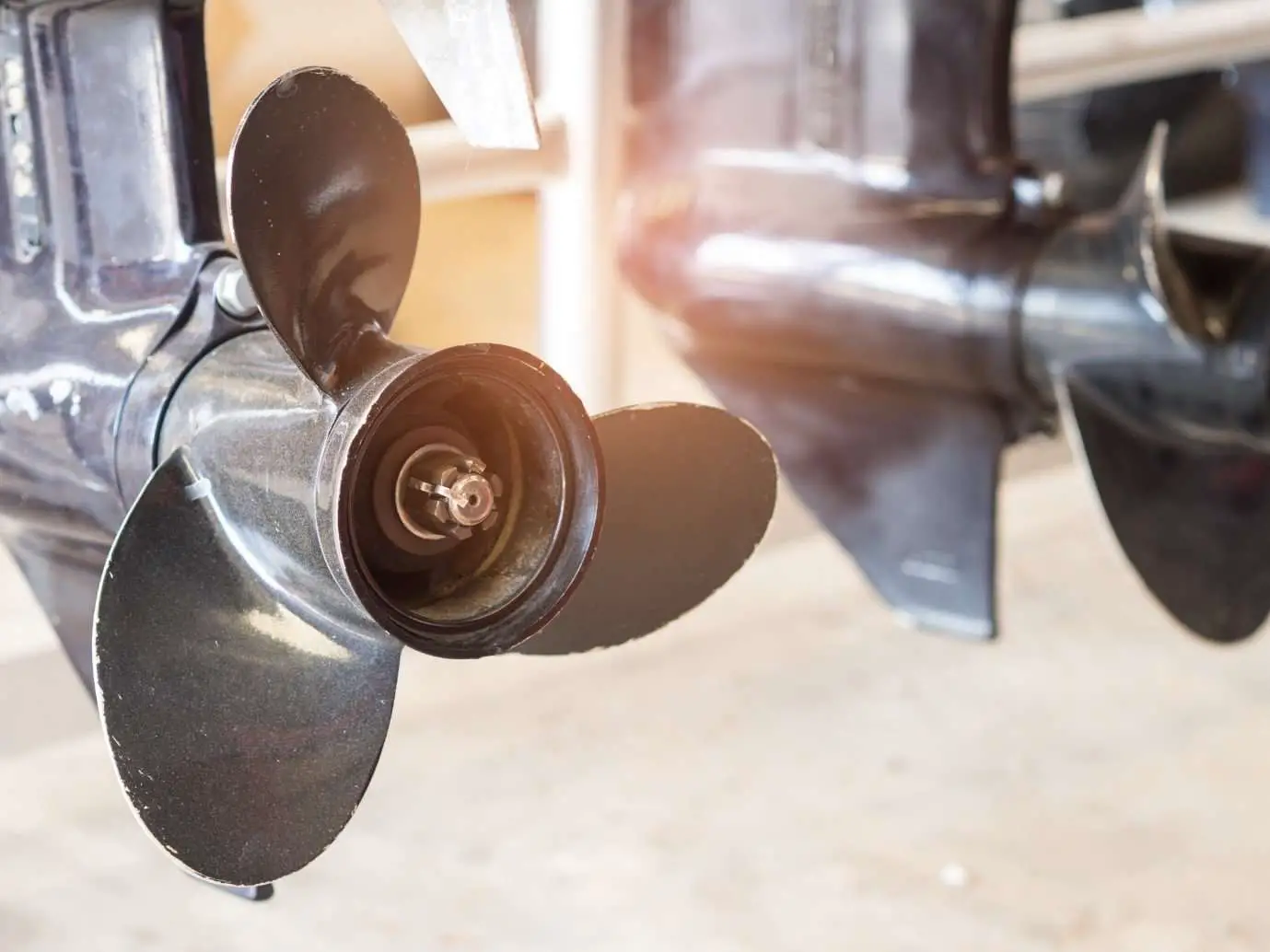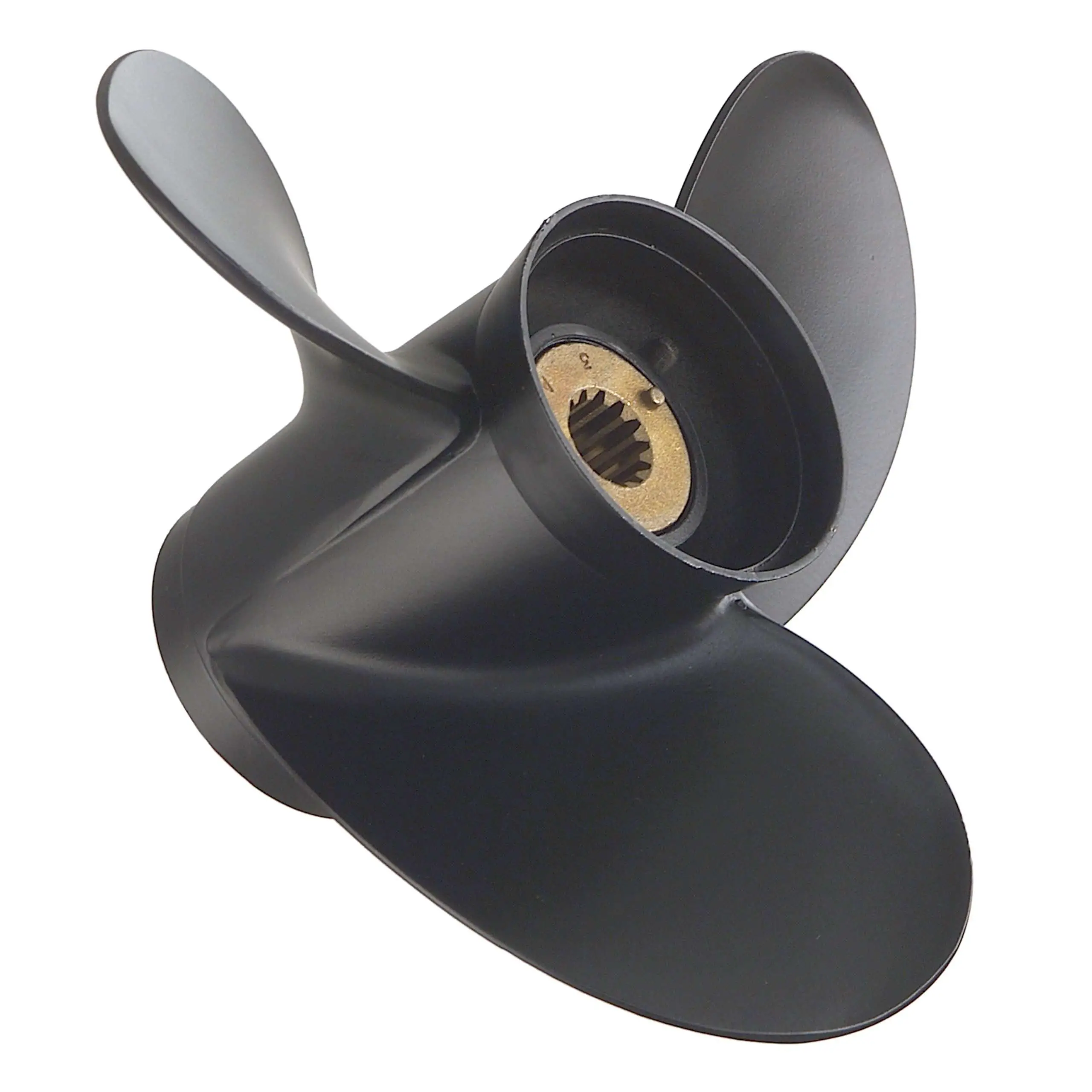Choosing The Right Propeller For You Boat Requires Trial And Error
Often, your dealer can supply two or three props for testing when you buy a new motor for a small fee.
This is because boat design, load and the running characteristics of your vessel all play a part.
Watch our video as we chat to marine mechanic Matt Solis from Barneyss Marine Hervey Bay for some tips and considerations when choosing the right propeller for your boat.
Ryan Moody
Ryan Moody started his fishing career on the reef boats before catching bucket list marlin for the likes of champion heavy tackle angler Johnno Johnson, INXS and the King of Sweden. Branching out in the late 80’s to guided barramundi fishing, Ryan has made a name for himself as a Big Barramundi specialist and to date has put clients onto over 2000 metre plus barra. That is over 2 kilometres of metre plus barra! With attitudes changing from ‘keep all you can’ towards catch and release, Ryan has decided to share his extensive knowledge and hopefully inspire people of all ages to get out from behind the computer screen/TV and into the fishing outdoors lifestyle he has spent his life perfecting.
Determining Propeller Options That Will Work With Your Boat
- If the engine exceeds the maximum recommended RPM, you may need to increase the pitch of your propeller. Increasing the pitch by 2will reduce engine speed by about 200-400 RPMs.
- Moving from an uncupped to a cupped propeller will also reduce your RPMs. A cupped propeller of the same pitch and diameter will typically reduce your engine speed by approximately 200 RPMs. If you cannot reach maximum RPM, then you need a prop with a lower pitch.
- These recommendations apply to single-engine installations. For most twin-engine installations, youll need to increase your pitch by 4.
Pros & Cons Of A 4 Or 3 Blade Prop
For us, if we go from a three blade to a four-blade without changing the diameter or pitch of the prop, we will lose top-end speed. What we will gain, however, is our hole shot .
Meaning we will be out of the water and cruising much quicker thanks to the extra blade generating a better grip from the prop to the water.
With the extra grip also comes better control and handling of our craft. Understanding these simple concepts is the crucial base foundation for us to begin the propping procedure to get the correct prop for your boat.
At the end of the day, it is ultimately up to you and what you are looking to get from your boat. Would you rather have a better hole shot or top-end speed?
Its your call! Personally, running larger boats close to the 30-foot range or higher calls for a 4 blade as its best for the size and weight of the boat. That extra blade really makes a notable difference in getting the boat out of the water and controlling it at higher speeds!
Recommended Reading: Remove Mold From Vinyl Seats
Choosing The Correct Pitch
For safety and efficient performance, it is critical that your engine operates within the RPM range recommended by the manufacturer. Matching the right prop for the load is the most significant factor when choosing a new propeller.
Determine Manufacturers Recommended Engine RPM
- Find the manufacturers recommended RPM range in the owners manual or contact your local dealer.
Test For Maximum RPM
- Using the existing propeller, make test runs to determine the maximum RPM and Boat Speed. Vary the Trim Angle for optimum performance.
If the RPM is HIGHER than Recommended:
- If the actual Wide Open Throttle RPM is Above the recommended RPM range, then install a Larger pitch propeller to your WOT RPM. Re-Test to determine a revised WOT RPM.
If RPM is LOWER than Recommended:
- If the actual WOT RPM is BELOW the recommended RPM Range, then install a Smaller pitch propeller to Increase your WOT RPM. Re-Test to determine a revised WOT RPM.
What Is A Nut Kit

The propeller is fixed on the propeller shaft with mounting parts. A nut kit usually includes a nut, cotter pin, washer and spacer. Normally you only need to replace your propeller and can re-use these parts. In case your propeller is lost while sailing you may have lost these parts as well. The right nut kit is suggested at the product page of the propeller for your engine.
You May Like: Does Aaa Cover Boat Trailers
How To Choose The Best Propeller For Your Glastron Boat
Theres one question that we hear constantly, its What is the best prop for my Glastron? This sounds like a simple question that should get a straight answer, but thats just not exactly the case. We will, however, do our best to help you decide on a replacement propellor. Heres what well cover:
- What a propeller is and how it works
- Why change your boats propeller?
- Determining options that will work with your boat
- Factors to evaluate
- Potential issues and problems
Another Reason To Change Your Boats Propeller
You might need to change your prop if its not performing properly. There are a couple of factors that can negatively affect the performance of your propeller.
- Dents and dings on one or more blades
- Hitting solid objects with a rapidly rotating propeller is never a good idea.
Either of these can cause vibration and stress on your engine, which can cause serious damage. So if youre feeling more vibration or noticing degraded performance, inspect your prop.
You May Like: Can You Boat Down The Mississippi River
Do All Boats Need A High Pitch Rc Propeller
Yes and no. Propellers with a higher pitch rating will travel further, but too much of a high pitch will eventually limit acceleration and speed. That being said, having a very low pitch prop on your boat can contribute to motor burnout. Its better to be safe than sorry in this matter.
Find All Boat Propellers That Fit My Current Engine
You will need to know your engine manufacturer, model and/or horsepower to determine which propellers will fit your boat. Once listed, you can then determine the size you are looking for. Once you provide the specifications on your engine, we will display all of the propellers that fit your engine. You will then be able to filter based on diameter, pitch, material, # of blades, etc.
Use our Propeller Guide to find the best and most cost effective 100% authentic and genuine propellers for your marine engine.
Recommended Reading: Do You Have To Have Boat Insurance In Alabama
Propeller Problems And Their Causes
Ventilation
Ventilation occurs when surface air or exhaust gasses are drawn into the propeller blades. This prevents the prop blade from grabbing water. When ventilation occurs, engine RPMs climb rapidly and your boat loses speed. For those of you familiar with manual transmissions, ventilation is like pressing the clutch while accelerating. The engine revs higher, but its not being transferred to the wheels. Ventilation happens during excessively tight turns, when your motor is mounted very high on the transom, or when you have over-trimmed the engine.
Cavitation
Cavitation happens when water vaporizes or boils due to the extreme reduction of pressure on the back of the blade. Many propellers partially cavitate during normal operation, but too much cavitation can physically damage the blade surface when microscopic bubbles collapse on the propeller blade.
What causes cavitation? Plenty of things, but here are the most common issues:
- Having the wrong propeller style for your boating application
- A propeller with incorrect pitch
- Physical damage to the blade edges
- Obstructed water flow from the hull
- A running gear too close to the propeller
Other Factors To Consider When Purchasing A Boat Propeller
When you browse the available propellers to buy, youll notice there are two definitive numbers. One reflects the diameter , and the other describes the pitch . The diameter should be matched to the size of your boat. The pitch will help keep your engine within its ideal RPM operating range, according to Crowley Marine.
Youll also want to consider the cupping or the trailing edge of each blade on the propeller. The cupping can be gradual or angled and describes the bite on the water or the propellers ability to grab and push water, Boat U.S. explains. Cupping matters if you need a quick acceleration or want to operate in shallow areas. Increased cupping is what speed enthusiasts talk about, and there are even more complicated variations based on twin-engine designs. But every boat can achieve its best performance with the right degree of all three of these measurements: diameter, pitch, and cupping.
Don’t Miss: Does Capital One Offer Boat Loans
If All Else Fails Start With What You Know
With impressive seating capacity, abundant storage and stylish good looks, the SDX 250 Outboard is the go-to for effortless family day boating.
Sea Ray Boats
Knowing how to find the right propeller for your boat can be difficult. If youre still unsure which diameter, pitch, or cupping your propeller should be, start with what you know. Look at the existing propeller on your boat. Record those measurements and decide if your boat needs more power, speed, and efficiency or better capability in shallow water. Then, when choosing a new propeller, you can plan to make minor improvements over your old one.
You need your boat to perform well in every setting. And one of the best ways to ensure your engine power is harnessed to the max is pairing your boat and engine with the right propeller. Though it might seem like a simple concept, theres a lot that goes into finding the perfect propeller.
How Do I Find My Current Propeller Size

The size is usually indicated on outside of the propeller hub. It is usually written like this :
- 11 1/4 X 13
The first number is the diameter and the second number is the pitch .
Some brands use a different way to indicate the size or model.
- 11 1/4 X 13 G
- 48-832832A45 21P
- 5111-093-10
- 814629
Yamaha adds a letter to indicate the type of blade design. Mercury Mercruiser uses a number code ending with pitch size . Solas propellers use the last 4 numbers to indicate size . Volvo Penta uses a separate number system, see here for an overview table.
If you have lost your propeller in the water or it has become unreadable, please contact us for advise.
You May Like: How Much Does Freedom Boat Club Cost Per Month
Does My Boat Have The Wrong Size Prop
If the boat is over-propped the engine will not reach maximum rpm and the boat will underperform. Equally, if a boat is under-propped and the engine easily reaches or exceeds maximum rpm, the propeller needs more bite to get the boat to maximum performance level.
With outdrives, adjusting the pitch of the prop is often the only option, as the maximum diameter propeller is often already installed. Increasing the pitch will decrease the revs and vice-versa. If the engine revs seem OK with the current prop, but you want better acceleration, it is often possible to reduce the diameter and increase the pitch by roughly the same amount to give added acceleration without losing the top-end speed.
What About Shaft Size
The propellers shaft size is the size of the connecting shaft between the propeller and the boat. This is the only truly rigid aspect of choosing a propeller size your shaft size always has to remain the same.
If you were worried about the shaft size limiting your boats propeller options, dont be. Propeller diameters are made to fit shaft sizes, which are made to be big enough for their respective boats to handle.
You May Like: Rentmyboat Com
How To Choose The Right Prop For Your Boat
The proper propeller size for your boat and engine combination is based in part on the wide open throttle operating range for your particular engine. You can find this in your operator’s manual, expressed in terms of a certain horsepower at a certain r.p.m.
The goal in propeller selection is to determine what style and size will maximize your boat’s performance, while allowing your engine to operate in the recommended r.p.m. range. The correct propeller will prevent the engine from over-revving, yet allow it to reach the minimum r.p.m. where the maximum horsepower is produced, with ideal engine loading.
Using your existing propeller, determine your maximum obtainable r.p.m.. If during this test, you begin to exceed the maximum rated r.p.m. of the engine, reduce the throttle setting. If the engine over-revs beyond the maximum recommended r.p.m., you may need to increase the pitch of the propeller. Increasing the pitch increment by 2″ will result in approximately a 200-400 r.p.m. drop. Also, switching from an uncupped to a cupped propeller will reduce your r.p.m . The cupped propeller of the same pitch and diameter will typically reduce your r.p.m. by approximately 200. If you cannot reach maximum r.p.m., then pitch should be decreased. These recommendations apply to single engine installations only. For most twin engine installations it is necessary to increase pitch by 4″.
Right Hand Or Left Hand Rotation
A 4 blade propeller will usually have a smaller diameter for the same pitch size of the 3 blade equivalent. This is one reason they spin up quickly and yield good acceleration. The blades are often a bit smaller but offer more total blade area because of the additional blade, so they have more grip on the water. When switching from a 3 blade prop to a 4 blade, youll usually need to decrease the pitch by 1 or 2 inches to keep the engine RPM in the same range.
You May Like: What Is My Pontoon Boat Worth
The Meaning Of The Numbers On A Prop
Typically, most propellers will have specific information engraved on them. This information usually consists of two to four sets of numbers and letters.
One being the propeller diameter, the second being the pitch length, third representing the rotational direction and fourth being the bore/shaft diameter.
An example of these numbers displayed resembles the following: 15.6 x 15 | RH | 1 ¼
What Is The Benefit Of New Propeller Blade Design
Blade shape has moved on in the last 15 years or so, thanks partly to computer aided design and a better understanding of what advantages a particular blade shape can offer.
The heavy sectioned blade is no longer the preserve of the plodding working boat, it can also be used to advantage on high-speed vessels where performance and economy are of equal importance.
Take a look at the original propeller on my own boat . Not much more than a three-bladed slab of bronze that did its job of pushing the boat through the water.
Three-bladed propeller: a workhorse that served Tony Davies boat well for many years
Now move on ten years and look at the sophisticated four-blade foil design that runs much more quietly, with less vibration and gives increased fuel economy at semi-displacement cruising speed.
A modern four-blade design that is more fuel efficient and more powerful
Also Check: How To Get Mildew Out Of Boat Seats
How A Boat Propeller Really Works
Lets start with the basics of propellers. Theres a hub surrounded by blades of equal size and length. The edges are usually twisted proportionately. Most blades are designed to rotate clockwise, in a right-hand fashion, pushing water toward the rear of the craft as they move. Left-handed versions are used for those dual-engine installations and are paired with the clockwise varieties they can help with boat stabilization. Understanding how propellers work seems basic and might give the impression that choosing one for your boat is an easy proposition. Alas, its not simply a spinning hub with blades.
When Choosing The Right Propeller For Your Boat Youll Also Want To Consider The Material Used Number Of Blades And Pitch

A lower pitch allows you to build up RPM quickly which is good for big boats with a heavy load.
But there will be less forward travel with each revolution so not good for top speed.
A higher pitch is slower to build up RPM resulting in lower pulling power and acceleration but a greater top speed once the vessel winds up.
Youll also need to know how to read the prop. Meaning how to identify the size, diameter and pitch of a propeller.
Most props have a series of numbers on the side or inside the hub.
A three blade prop, 18.75 inches in diameter with a 19 inch pitch will have the numbers 3 X 18.75 X 19.
Numbers are printed on the side of your prop tell you the number of blades, diameter and pitch of your prop.
If they are not printed on the side of the prop, look for the numbers inside the hub of the propeller to determine diameter and pitch.
Also Check: How To Get Mold Stains Out Of Boat Seats
